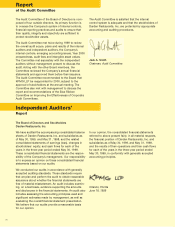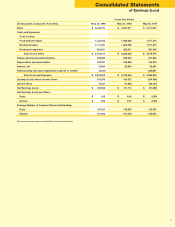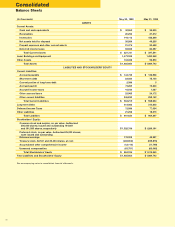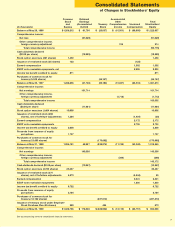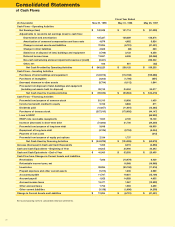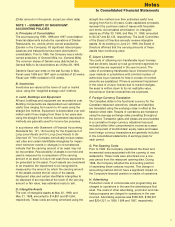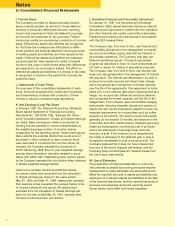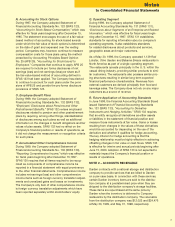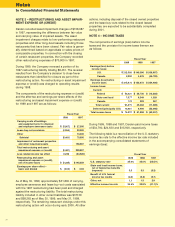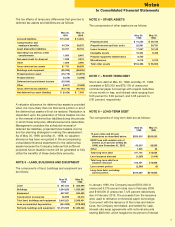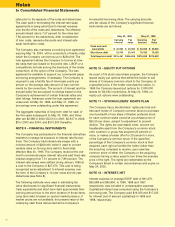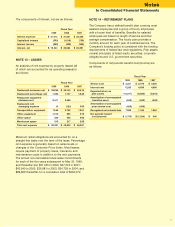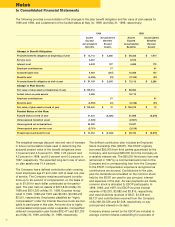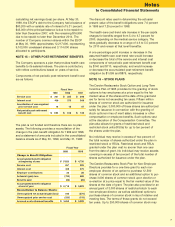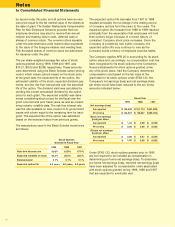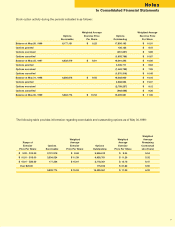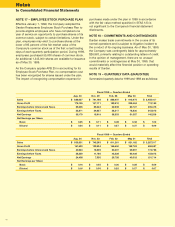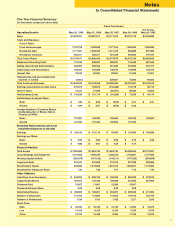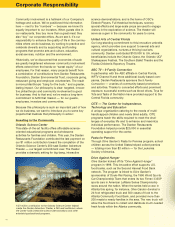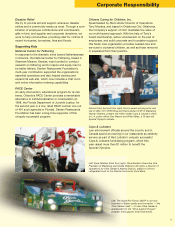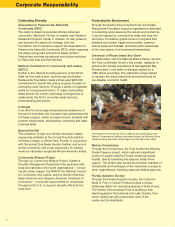Red Lobster 1999 Annual Report Download - page 15
Download and view the complete annual report
Please find page 15 of the 1999 Red Lobster annual report below. You can navigate through the pages in the report by either clicking on the pages listed below, or by using the keyword search tool below to find specific information within the annual report.
Notes
to Consolidated Financial Statements
36
rates prior to the issuance of the notes and deben
tures.
The cash paid in terminating the interest-rate swap
agreements is being amortized to interest expense
over the life of the notes and debentures. The effective
annual interest rate is 7.57 percent for the notes and
7.82 percent for the debentures, after consideration
of loan costs, issuance discounts and interest-rate
swap termination costs.
The Company also maintains a revolving loan agreement
expiring May 19, 2000, with a consortium of banks under
which the Company can borrow up to $250,000. The
loan agreement allows the Company to borrow at inter-
est rates that vary based on the prime rate, LIBOR or a
competitively bid rate among the members of the lender
consortium, at the option of the Company. The loan
agreement is available to support our commercial paper
borrowing arrangements, if necessary. The Company is
required to pay a facility fee of nine basis points per
annum on the average daily amount of loan commit-
ments by the consortium. The amount of interest and the
annual facility fee are subject to change based on the
Company’s achievement of certain financial ratios and
debt ratings. Advances under the loan agreement are
unsecured. At May 30, 1999, and May 31, 1998, no
borrowings were outstanding under this agreement.
The aggregate maturities of long-term debt for each of
the five years subsequent to May 30, 1999, and there-
after are $2,386 in 2000; $2,513 in 2001; $2,647 in 2002;
$0 in 2003 and 2004; and $310,200 thereafter.
NOTE 9 – FINANCIAL INSTRUMENTS
The Company has participated in the financial derivatives
markets to manage its exposure to interest rate fluctua-
tions. The Company had interest-rate swaps with a
notional amount of $200,000 which it used to convert
variable rates on its long-term debt to fixed rates
effective May 30, 1995. The Company received the one-
month commercial paper interest rate and paid fixed-rate
interest ranging from 7.51 percent to 7.89 percent. The
interest-rate swaps were settled during January 1996 at
a cost to the Company of $27,670. This cost is being
recognized as an adjustment to interest expense over
the term of the Company’s 10-year notes and 20-year
debentures (see Note 8).
The following methods were used in estimating fair
value disclosures for significant financial instruments:
Cash equivalents and short-term debt approximate their
carrying amount due to the short duration of those items.
Long-term debt is based on quoted market prices or, if
market prices are not available, the present value of the
underlying cash flows discounted at the Company’s
incremental borrowing rates. The carrying amounts
and fair values of the Company’s significant financial
instruments are as follows:
May 30, 1999 May 31, 1998
Carrying Fair Carrying Fair
Amount Value Amount Value
Cash and cash
equivalents $ 40,960 $ 40,960 $ 33,505 $ 33,505
Short-term debt 23,500 23,500 75,100 75,100
Total long-term debt $316,451 $306,806 $ 310,608 $314,502
NOTE 10 – EQUITY PUT OPTIONS
As a part of its stock repurchase program, the Company
issued equity put options that entitle the holder to sell
shares of Company common stock to the Company, at
a specified price, if the holder exercises the option. In
1999 the Company issued put options for 2,000,000
shares for $2,184 in premiums. At May 30, 1999, no
equity put options were outstanding.
NOTE 11 – STOCKHOLDERS’ RIGHTS PLAN
The Company has a stockholders’ rights plan that enti-
tles each holder of Company common stock to purchase
one-hundredth of one share of Darden preferred stock
for each common share owned at a purchase price of
$62.50 per share, subject to adjustment to prevent
dilution. The rights are exercisable when, and are not
transferable apart from the Company’s common stock
until, a person or group has acquired 20 percent or
more, or makes a tender offer for 20 percent or more,
of the Company’s common stock. If the specified
percentage of the Company’s common stock is then
acquired, each right will entitle the holder (other than
the acquiring company) to receive, upon exercise,
common stock of either the Company or the acquiring
company having a value equal to two times the exercise
price of the right. The rights are redeemable by the
Company’s Board in certain circumstances and expire on
May 24, 2005.
NOTE 12 – INTEREST, NET
Interest expense on average ESOP debt of $61,270,
$62,688 and $65,850, in 1999, 1998 and 1997,
respectively, was included in compensation expense.
Capitalized interest was computed using the Company’s
borrowing rate. The Company paid $16,356 and $17,235
for interest (net of amount capitalized) in 1999 and
1998, respectively.


